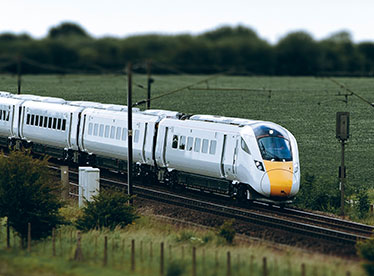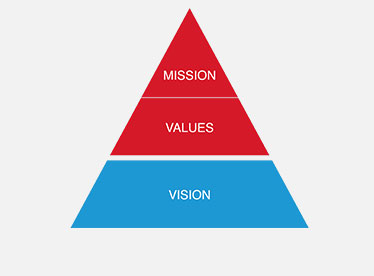-
Products
-
Transportation & Mobility Solutions
Transportation & Mobility Solutions
At Hitachi, we engineer industry-leading transportation and mobility solutions by leveraging decades of knowledge and using high-quality automotive material and components.
-
Energy Solutions
Energy Solutions
We believe the only solution for fulfilling the growing power requirements of industries and society is through a comprehensive portfolio of sustainable energy solutions and delivering innovative high-efficiency energy systems.
-
IT Infrastructure Services
IT Infrastructure Services
Hitachi’s state-of-the-art IT products and services are known to streamline business processes which result in better productivity and a higher return on investment (ROI).
-
Social Infrastructure: Industrial Products
Social Infrastructure: Industrial Products
Within the industrial sector, Hitachi is consistently delivering superior components and services, including industrial and automation solutions, useful in manufacturing facilities.
-
Healthcare & Life Sciences
Healthcare & Life Sciences
At Hitachi, we believe that healthcare innovation is crucial to a society’s advancement. A strong healthcare sector is often considered an inseparable element of a developed society.
-
Scientific Research & Laboratory Equipments
Scientific Research & Laboratory Equipments
Hitachi focuses on extensive research and development, transformative technology, and systems innovation to unfold new possibilities and create new value through scientific endeavors that strengthen the connection between science and social progress.
-
Smart Audio Visual Products
Smart Audio Visual Products
Since 1956, Hitachi audio visual products have provided state of the art solutions to consumers all over the world. It has been our pleasure to design competitive products at the lowest possible prices while maintaining our industry-leading quality standards for your comfort and enjoyment.
-
View All Products
Hitachi Products & Solutions
Hitachi, a technology leader in the U.S., offers a diverse set of products and solutions, and breakthrough technologies for smart manufacturing, green energy and mobility solutions that empower governments, businesses, and communities.
-
Transportation & Mobility Solutions
- Social Innovation Solutions
-
About Us
-
Hitachi in the U.S.A.
Hitachi in the U.S.A.
Discover information about the Hitachi group network across the Americas, upcoming events and sustainability endeavours, CSR policies, and corporate government relations.
-
About Hitachi Group
About Hitachi Group
Explore our leadership team, investor relations, environmental vision, and sustainability goals. Learn how Hitachi is leveraging its research & development capabilities for social innovation across industry verticals.
-
Hitachi in the U.S.A.
- News Releases
- Case Studies
- Careers
- R&D
HITACHI GIGABIT PASSIVE OPTICAL NETWORK SOLUTION MERGES BROADBAND INFRASTRUCTURE WITH THE BROADBAND HOME
--Multiple Channels Of HDTV and Increasing Interactivity Demand New Delivery Technologies --
LAS VEGAS (CES BOOTH #11906) – January 8, 2007 – Hitachi Telecom (USA), Inc. today detailed plans to exhibit the company’s Gigabit Passive Optical Network (GPON) solutions at the International CES 2007 show in Las Vegas, January 8-11, 2007. The exhibit is in concert with Hitachi’s end-to-end “Broadband Infrastructure, Broadband Home” theme at the Network Solutions area of the booth. The Hitachi exhibit is located in the Las Vegas Convention Center, Central Hall, Booth 11906.
Hitachi’s AMN1220 GPON system delivers high-bandwidth communication and entertainment services to users through a direct fiber optic connection to individual residences and businesses. Bandwidth available per user can range from 78 megabits per second to 1 gigabit per second, depending on the service level agreements established by the service provider. Typical services include HDTV, high speed data, and voice – the “triple play.”
Why is this massive increase in bandwidth needed? Today, HDTV requires up to 20 megabits per second of bandwidth per channel being viewed. So, when multiple channels are being viewed simultaneously in a household – for example, one TV tuned to a football game, one to a movie, and one to a science channel, the bandwidth required for video in that residence can approach 60 megabits per second. Advances in compression technology will reduce this requirement over time, to as low as 6 megabits per second under ideal circumstances. But especially for live action programming such as sporting events – content that cannot be delayed or “buffered” to accommodate periodic transmission delays – the actual bandwidth requirement will be higher. Also, larger screens are less tolerant of transmission aberrations, so that blocking and artifacts are much more visible than on smaller screens.
As the link between the service provider and the consumer, the Hitachi AMN1220 GPON solution provides the fastest downstream speeds available today, operating at 2.4 gigabits per second downstream and 1.2 gigabits per second upstream. This bandwidth gives service providers the headroom to provide multiple simultaneous HDTV channels to the consumer’s home, along with high speed Internet and voice services. This performance positively influences the end user’s entertainment experience, and because video is an important source of revenue for the service provider, GPON offers a win-win scenario across the board.
Hitachi is one of the few companies that provide product throughout the chain from video headend to the distribution infrastructure and to the end user’s HDTV. In addition to the AMN1220 GPON product, Hitachi’s exhibit at CES will include products for video headend applications and numerous in-home networking and consumer products.
Another focus of the broadband service delivery chain is the distribution and networking of video, data and voice within the home. The Multimedia Over Coax Alliance (MoCA) develops and promotes specifications for the transport of digital entertainment and information content using the cable TV coaxial cable already installed in many homes in North America. Within a residence, the MoCA standard establishes a “MoCA LAN” between MoCA-enabled devices, supporting bi-directional communications among the devices.
Hitachi was the first GPON manufacturer to offer a MoCA-approved optical network terminal (ONT). Hitachi also has a display in the MoCA booth, South Hall 1, 22053.






